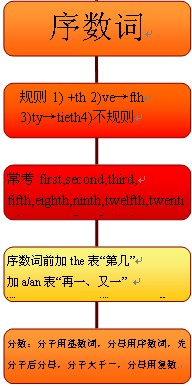阅读下列短文,根据所读内容在文章后的表格中填入恰当的单词(注意:表格中的每个空只填一个单词)
For more than twenty years scientists have been seeking to understand the mystery of the ‘‘sixth sense" of direction.By trying out ideas and solving problems one by one,they are now getting closer to one answer.
One funny idea is that animals might have a built-in compass(指南针).
Our earth itself is a big magnet(磁体).So a little magnetic needle that swings freely lines
itself with the big earth magnet to point north When people discovered that idea about a thousand years ago and invented the compass,it allowed sailors to navigate (航海)on ocean voyages, even under cloudy skies.

Actually the idea of the living compass came just from observing animals in nature.
Many birds migrate twice a year between their summer homes and winter homes.Some of them fly for thousands of kilometers and mostly at night.Experiments have shown that some birds can recognize star patterns.But they can keep on course even under cloudy skies.How can they do that?
A common bird that does not migrate but is great at finding its way home is the homing pigeon.Not all pigeons can find their way home.Those that can are very good at it,and they have been widely studied.
One interesting experiment was to attach little magnets to the birds’ heads to block their magnetic sense—just as a loud radio can keep you from hearing a call to dinner.On sunny days, that did not fool the pigeons.Evidently they can use the sun to tell which way they are going.But on cloudy days,the pigeons with magnets could not find their way.It was as if the magnets had blocked their magnetic sense.
Similar experiments with the same kind of results were done with honeybees.These insects also seem to have a special sense of direction.
In spite of the experiments,the idea of an animal compass seemed pretty extraordinary.How
would an animal get the magnetic stuff for a compass.
An answer came from an unexpected source.A scientist was studying bacteria that live in the
mud of ponds and marshes.He found accidentally little rod-like bacteria that all swam together inone direction—north.
Further study showed that each little bacterium had a chain of dense particles inside,which
proved magnetic.The bacteria had made themselves into little magnets that could line up with the
earth’s magnet.
The big news was that a living thing,even a simple bacterium,can make magnetite.That led
to a search to see whether animals might have it.. By using a special instrument called magnetometer,scientists were able to find magnetite in bees and birds,and even in fish.In each animal,except for the bee.the magnetic stuff was always in or closer to the brain.Thus.the idea of a built—in animal compass began to seem reasonable.
The Magnetic Sense — The Living Compass
|
Passage outline
| Supporting details
|
The existence of the earth magnet and the invention of the navigating compass
| ◇Our earth is a big magnet and a little freely 小题1:
magnetic needle lines itself with the earth magnet to point north and south.
◇小题2: on the idea above, the navigating compass was invented.
|
The possibility of birds’ built-in compasses
| ◇ One piece of evidence is the 小题3: of many birds between their summer homes and winter homes.
◇ Birds can recognize star patterns on clear nights and keep on course 小题4: under cloudy skies
|
本试题 “阅读下列短文,根据所读内容在文章后的表格中填入恰当的单词(注意:表格中的每个空只填一个单词)For more than twenty years scientists have been seeking...” 主要考查您对 序数词
等考点的理解。关于这些考点您可以点击下面的选项卡查看详细档案。
序数词的概念:
表示顺序的数称为序数词。如:first, second, third, fourth。
序数词的构成与用法:
1、序数词的构成:
①一般来说,是由相应的基数词加词尾th构成。
例:four+th→fourth
six+th→sixth
seven+th→seventh
ten+th→tenth
②下面这些基数词在变为序数词时,有特殊的变化。
例:one→first
two→second
three→third
five→fifth
eight→eighth
nine→ninth
twelve→twelfth
③十位整数序数词的构成方法是将基数词的词y变成i,然后再加eth。
例:twenty→twentieth
thirty→thirtieth
forty→fortieth
ninety→ninetieth
④两位或两位以上的基数词变成序数词时,仅将个位数变成序数词。
例:twenty-one→twenty-first
thirty-five→thirty-fifth
a hundred and fifty-three→a hundred and fifty-third
2、序数词的用法:
①序数词在使用时,一般加上定冠词。
例:the first book
the second floor
the third day
the fourth week.
②序数词在多数情况下都用作定语,有的也可以作表语、主语和宾语。
例:The may1st is Labour Day. 五月一日是劳动节。
My room is on the second floor. 我的房间在二楼。
The first is larger than the secon.(主语)第一个比第二个大。
Read the book from the first.(宾语)从开头读这本书。
You'll be the sixth to write.(表语)你将是第六个写的。
③序数词的前面可以加上不定冠词,用来表示“再一”,“又一”的意思。
例:You may have a third try. 你可以第三次尝试。
序数词知识体系:

约数的表达方法:
用tens/dozens/scores/hundreds/thousands/millions of 表示“几十、几百、上千、成千上万”等。
如:The boy bought dozens of pencils.
Thousands of people died in the earthquake.
注意: (A):dozen, score, hundred, thousand, million等表示确切数量时,不用复数。
如:five dozen (of) eggs 五打鸡蛋
hree hundred people 三百个人
分数词的构成和用法:
1)分数词构成法:
分数词(FractionalNumerals)由基数词和序数词构成,基数词代表分子,序数词代表分母。除了分子为1的情况下,序数词都要用复数形式:
如:1/4:one-fourth
5/9:five-ninths
2/3:two-thirds
17/5:three and two-fifths
7/12:seven-twelfths
379/8:forty-seven and three-eighths
此外还有下面表示法:
如:1/2:a(one) half
1/4:a(one) quarter
3/4:three-quarters
9/4:two and a quarter
3/2:one and half
31/4:seven and three quarters
与“阅读下列短文,根据所读内容在文章后的表格中填入恰当的单词...”考查相似的试题有: